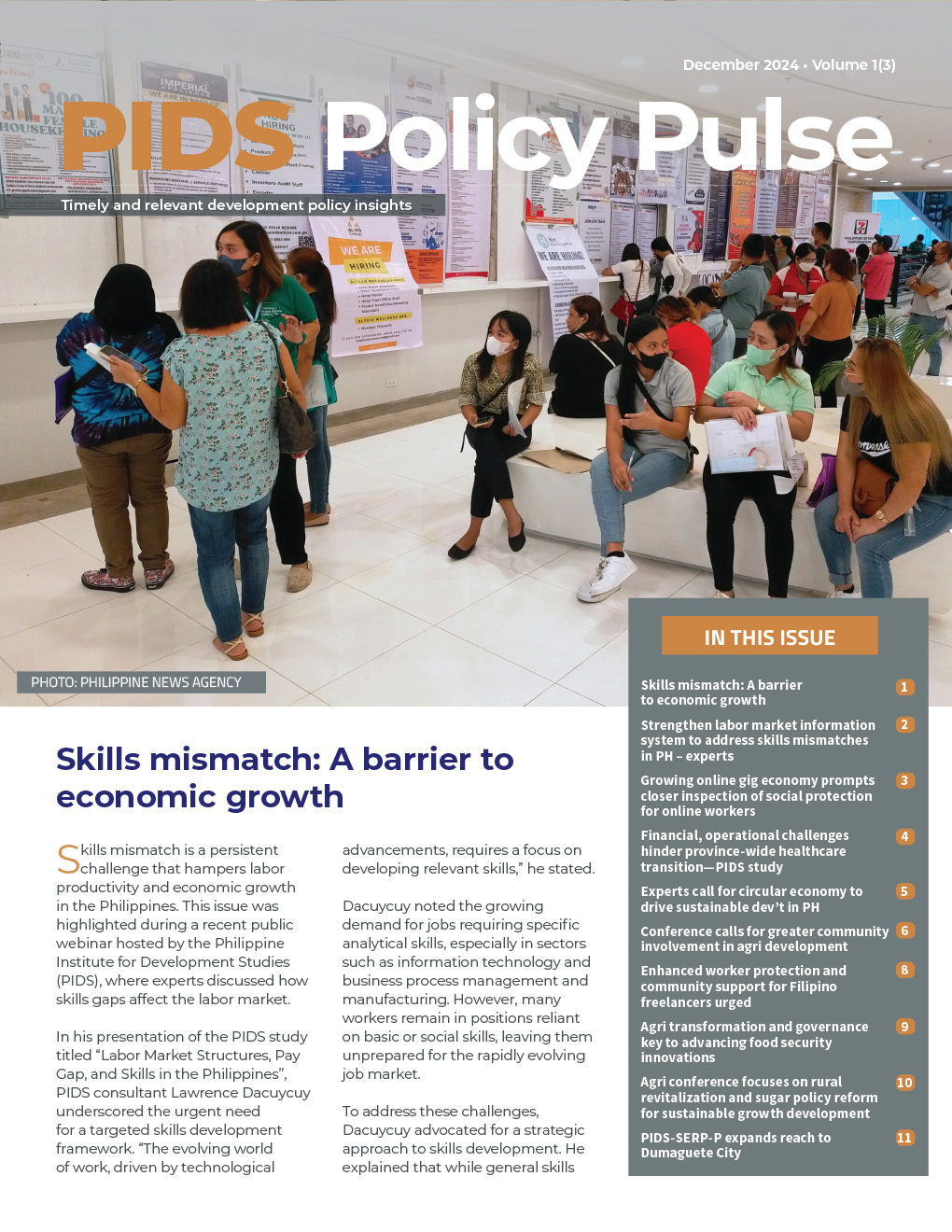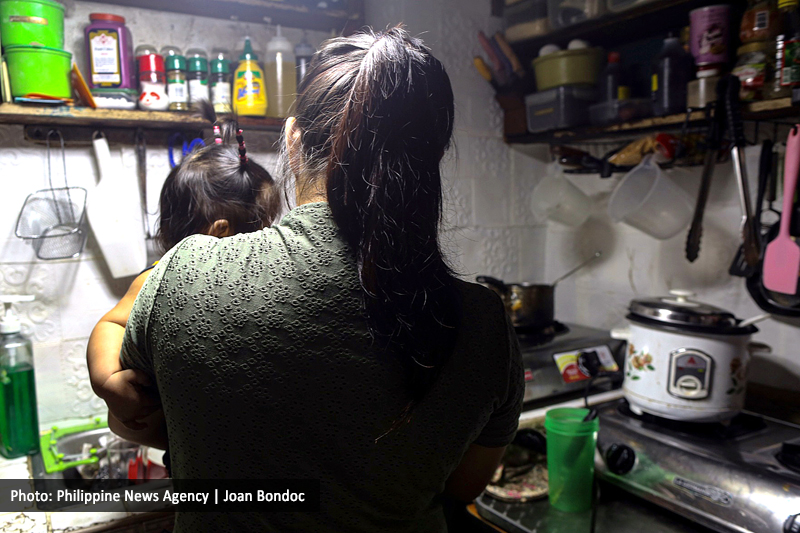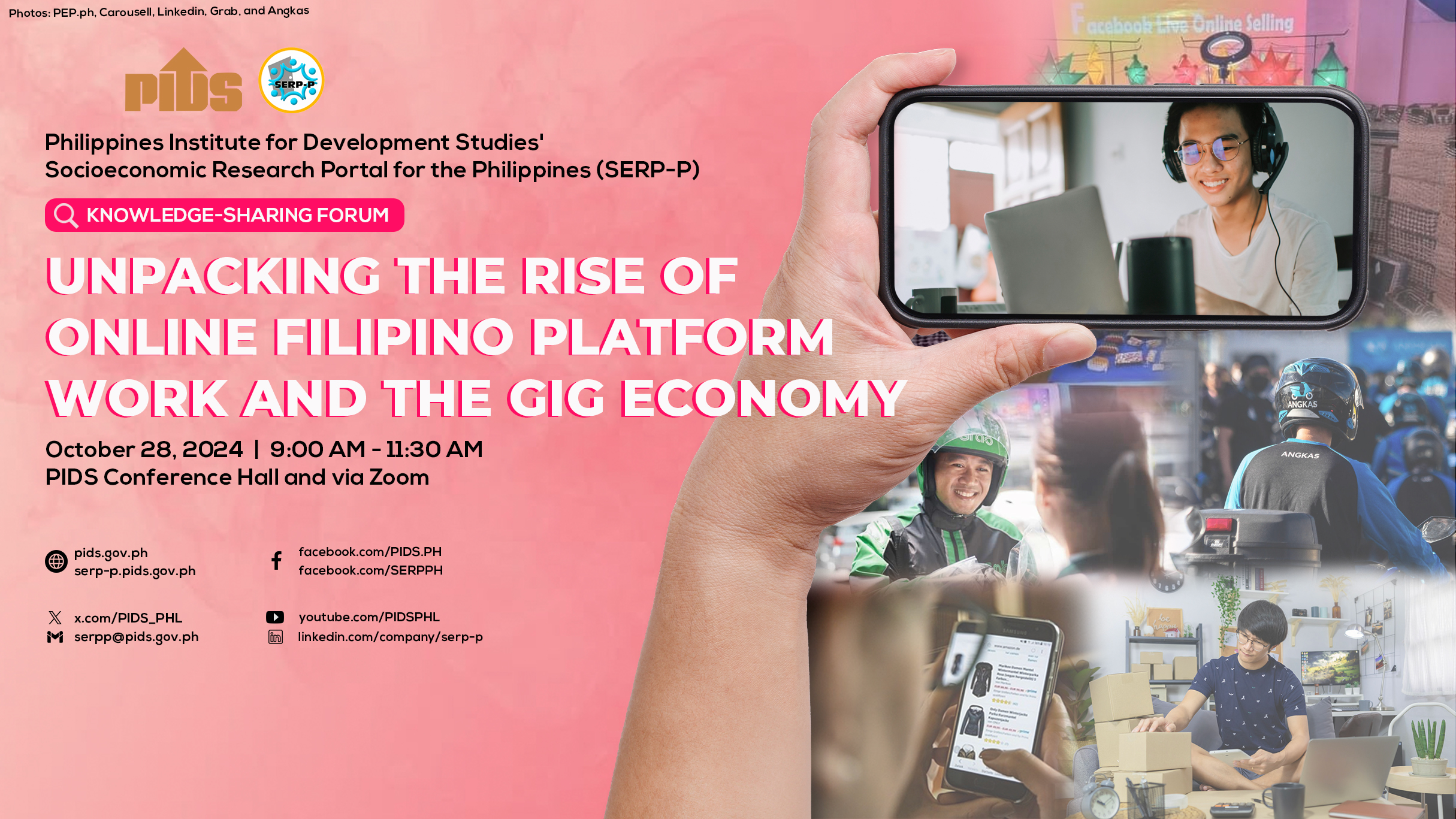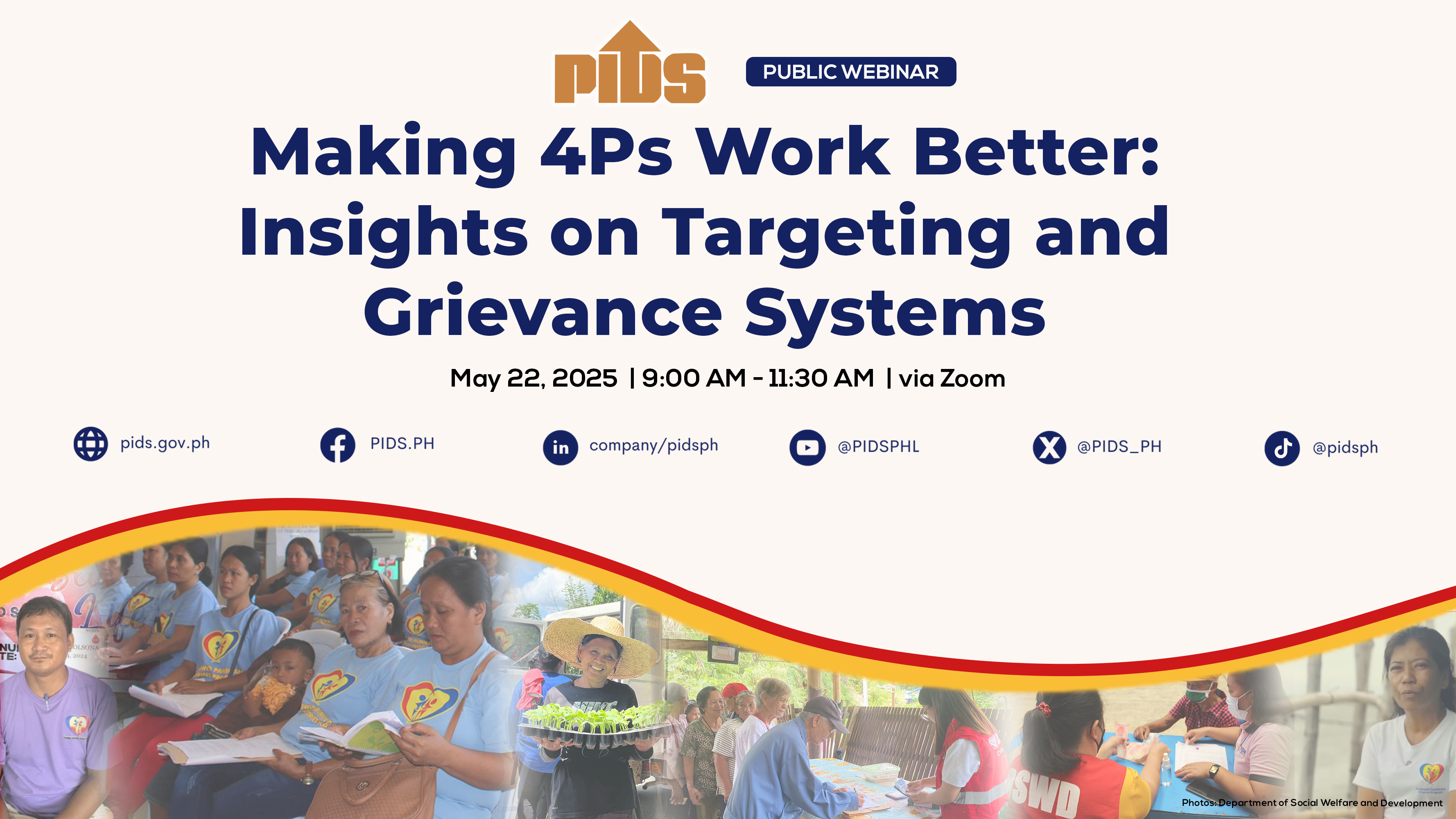THE so-called Fourth Industrial Revolution (FIRe) has reduced old jobs to ashes while new work categories are rising like the phoenix.
For one, an official of the Department of Labor and Employment (DOLE) is saying there are signs within the labor market that the FIRe is now altering the labor landscape.
“You would note some jobs are now obsolete or being replaced by new forms or types of jobs,” DOLE’s Bureau of Local Employment (BLE) Director Dominique R. Tutay told the BusinessMirror in an interview.
The Asian Development Bank (ADB) estimated FIRe started in the 2000s, with the introduction of the smartphones.
New labor-saving technologies were introduced later, such as artificial intelligence, robotics, 3D printing, nanotechnology, fully automated vehicles and quantum computing, which further integrated the digital and biological sphere of a workplace.
This gave birth to the popularization of nonstandard forms of employment like the so-called gig economy.
The International Labor Organization (ILO) defines gig economy as labor platforms that make use of technology to connect workers with consumers for one-off tasks. Technology is also used to connect people to jobs that are completed either virtually or in person by an on-demand work force.
Among the services currently provided by the gig economy are driving, running errands or cleaning houses.
FIRe changes
THE changes caused by FIRe in the workplace, which happened in just over a decade, have alarmed some international organizations.
The World Economic Forum has estimated over 5 million jobs will be lost by 2020 because of these new technologies.
For its part, the World Bank said about two-thirds of jobs worldwide are vulnerable to automation, although it added less than 20 percent of these jobs will disappear completely.
The impact of FIRe in the workplace, however, differed per country depending on their policies and available technology.
Here in the Philippines, the DOLE reported its first case in recent years of obsolescence in the labor market in 2016. The DOLE said jobs were “destroyed” due to the introduction of new technology and market demands.
Around 7,000 workers in the semiconductor industry were affected by obsolescence that time. The DOLE said it was later able to facilitate new employment for the affected workers. After that, the agency started to maintain a constant watch on similar cases.
Yet another vulnerable sector to the “impending threat” of FIRe, the Federation of Free Workers said, is the banking industry.
“In the banking industry, check clearing within and across banks both here and abroad has tripledin speed, resulting in the displacement of bank departments in charge of check clearing,” FFW Vice President Julius H. Cainglet said in a text message to the BusinessMirror.
Due to the introduction of more automation in the check processing system, Cainglet said the Philippine Clearing House Corp. reduced its work force from 76 to 25.
Ululating sectors
AS of January, Tutay said they have yet to confirm another instance of obsolescence. However, she said the segmentation of existing jobs to multiple specialized iterations in previous years has caused some of the unprepared workers to become unemployed.
In the 2019 edition of its JobsFit 2022 report, a significant portion of the 166,721 displaced workers from 2014 to 2017 could be attributed to FIRe.
The DOLE’s BLE noted the retrenchment is focused on the following industries that are already affected by FIRe: manufacturing and the information technology-business process outsourcing (IT-BPM) subsectors.
Over a third or 58,390 of the displaced workers for the four-year period were from the manufacturing subsector, particularly those engaged in computer, electronic and optical products.
They only made up less than 1 percent of the 7.8 million workers in the industry sector as of last year. However, they are slowly increasing by an average of 18.1 percent each year.
Tutay noted workers in the subsector are usually among the most pressured to continue upgrading their skills to catch up with the emerging technology, which are constantly introduced by their management to cut costs and boost profits.
“There is always shifting skills sets [in the subsector] because of the type of the products they have to produce,” Tutay said.
Another third of the displacement in JobsFit were from the administrative and support service activities subsector. This includes the IT-BPM sector, with 42,492 retrenched workers or 0.8 percent of the 23.3 million workers in the service sector in 2018.
Tutay explained the IT-BPM is now moving away from basic voice call services, which are now slowly being taken over by artificial intelligence (AI) and adopting cloud technology, to higher-paying data processing services.
Workers unable to keep up with the shift in terms of skills are left displaced.
Tutay said they are anticipating displacement from FIRe to continue to increase in the next five years.
Tenure, telecommute
INCIDENTALLY, both the manufacturing and administrative subsectors were among the most heavily affected by the government’s three-year drive against illegal contractualization.
While hailed by the government and labor groups for regularizing over 400,000 contractual workers during its current run, the campaign also led to displacement, since some principals were unable to completely absorb their illegally contracted workers.
The government campaign is considered novel since it directly challenged the norm for local companies of outsourcing certain portions of their operations.
New policies, such as DOLE Department Order 174 and Executive Order 51, were implemented by the current administration to restrict the practice of contractualization in the country by further regulating job contractors, amid rising pressure from organized labor union.
Additional controls on contractualization were also put in place under the pending Security of Tenure Bill, as well as in Republic Act (RA) 11165 or the Telecommuting Law.
The DOLE said that, while RA 11165 allows employers and workers to voluntary engage in the new scheme of home-based employment, it must be on condition that there will be no diminution of benefits enjoyed later. This includes security of tenure.
Little protection
OUTSIDE of the Philippines, however, more international companies continue to embrace contractualization as shown by the growing popularity of the gig economy and offshoring, wherein company production is spread out to multiple countries.
In his presentation during the FIRe forum organized by the Philippine Institute for Development Studies (PIDS) last year, University of the Philippines (UP) School of Economics Professor Emmanuel F. Esguerra noted that, while the gig economy provides more flexibility to employers, it remains disadvantageous for workers.
Esguerra said that among the pitfalls of the gig economy is the lack of a direct relationship between employer and an employee, which prevents the latter from accessing basic labor standards.
“Disadvantages include unemployment risk, lack of social protection cover, absence of nonwage benefits and pension,” Esguerra said.
He noted there are currently no official government estimates on the number of Filipino workers engaged in the gig economy. This leaves many of them excluded in many government policies.
Robotic tech
WHILE these effects of FIRe are already being felt, some international organizations project it will take some time before the much feared full impact comes to pass.
For one thing, the Asian Development Bank (ADB) said new technology like robots remains expensive, which makes its use limited to only some subsectors.
Currently, it noted, “industrial robots remain concentrated in capital-intensive sectors where employment shares are relatively small.”
The ADB said most of the companies using robots are in the electronics and automotive industry.
The same goes for fully automated transportation like ships and ports, as observed by the International Transport Workers’ Federation (ITF).
Aside from being costlier than conventional transportation and facilities, ITF General Secretary Stephen Cotton said many countries still lack the necessary legislation and infrastructure for such innovations.
“We believe that at the moment it is more of product placement strategy by the manufacturers to promote their goods,” Cotton told the BusinessMirror in an interview.
He made the statement, when asked about the impact of Yara Birkeland, the so-called first-ever fully automated ship sailing in the Norwegian Coasts.
The labor leader said he sees no imminent threat for labor when it comes to fully automated vehicles, although he is not discounting it might eventually happen in the future.
Cotton said they established a London-based team tasked to monitor the developments of automation on all modes of transportation so they could make the necessary preparations once it becomes widespread.
Expected displacement
THE ADB said FIRe is not without its advantages, especially for labor.
It noted new technological advances will boost labor productivity and generate demands leading to the creation of new jobs, which are more than enough to offset the expected displacement it will cause.
“Technology leads to new occupations…but these tend to be non-routine cognitive category,” ADB Chief Economist Yasayuki Sawada said in his presentation at the forum on FIRe organized by the PIDS.
The ADB said these non-routine and cognitive jobs, like managers and technical experts, also have the least chances of being replaced by new technology.
In contrast, the ADB noted that routine and manual jobs like those in the plant assembly line and call centers are the most vulnerable to new technology.
Citing the results of comprehensive stakeholder consultations, the DOLE noted the growing number of new job demands from the industry, which are yet to be defined or regulated by the government.
“In the past, the CHED [Commission on Higher Educations] would accomplish an average of 70 to 80 PSGs [policy, standards and guidelines] for new courses,” Tutay said. “Now, it is more than a hundred.”
Work forced
TUTAY added this is also apparent in the latest JobsFit report, which showed that out of its listed 100 in-demand and hard-to-fill jobs, 17 are not even recognized under the Philippine Standards Occupation Classification (PSOC).
The PSOC, which is issued by the Philippine Statistics Authority (PSA), is a statistical classification of the different occupational groups of the working population, including the military work force in the country.
Thirteen of the said 17 jobs are considered emerging jobs—in demand and hard-to-fill occupations, which did not exist in the labor market before.
These include occupations, which if not self-explanatory, are already familiar to the public like electronic mail and chat support agent; mobile application developer; hair transplant technician; search engine optimization analysts; social media analysts; and transport network vehicle service (TNVS) providers.
Some are the result of the growing specialization within the company’s operations. Among these are the business process analysts, who are responsible for structuring large amount of information within a process framework; data scientists, who are responsible for creating “machine learning-based tools” in a company; design engineers, who are someone who creates the concept and design for development and management projects; and order tracker, those who oversee the packaging and transfer of goods in an industry.
Opportunities seen
THE most unique of the new jobs are the evisceration processors or those responsible for removing internal organs of processed carcasses; genomicists, or those tasked to analyze DNA data with the help of computer software; and nanotechnologists, or those who manipulate matter on a nano-scale to develop materials, drugs and diagnostic tools.
The addition of these new jobs means more employment opportunities for job seekers.
Tutay, however, said filling up these vacancies will pose a problem, since government education regulators like the CHED are still struggling to catch up with these job demands from the private sector.
She noted they should continue to fast-track the creation of the PSG to ensure more students or trainees will be able to apply for the said positions.
“What is needed is the timeliness in the issuance of their [educational institutions] policy standards and guidelines and the timeliness of their review of curriculum to meet new industry needs,” Tutay said.
Recovery chances
CURRENTLY, government interventions to address the problems caused by FIRe involve giving the students, trainees and even workers up-to-date labor market information so they could be guided on the courses or skills training they would have to get to be hired.<
“What is important is the willingness of the supply of labor to upgrade and retool, because the government has many tools to make the necessary adjustments [in the labor market] so they could fit in,” Tutay said.
Aside from the usual focus on science, technology, engineering and mathematics, or so-called Stem subjects, she said equal priority must be given to “soft skills” or behavioral skills.
For its part, the ILO and the ADB recommended an unemployment insurance mechanism to facilitate the smooth transition for workers who will be displaced because of FIRe.
In the Philippines, there is pending legislation enabling the Social Security System to provide financial aid to unemployed workers.
The reform lacked any provision that will provide its beneficiaries with an integrated employment facilitation and skills training, to boost their chances to recover from their unemployment.
Cainglet said this would provide a “just transition” to the affected workers.
“Just transition measures look at employment security and where applicable re-skilling, and employment and job matching and placement,” Cainglet said.
“It also looks at the socioeconomic impacts on the families of workers and the communities where they live, thus, stressing the need for social protection,” he added.
The ILO fell short of making an official recommendation on how governments could successfully fund the transition programs for FIRe-affected workers.
But based on the results from stakeholders consultations, among the options that were floated were taxing robots and other technologies or carbon emissions.
Kept updated
TO help address these concerns, the PIDS conducted a scoping study on the growing impact of FIRe in the world of work to provide policy guidance to its stakeholders.
“We are now realizing many of these [FIRe] technologies are already available in the Philippines, but few are aware of these new technologies and, more importantly, not aware of the possible impact of this disruptive technologies to many of the sectors,” PIDS President Celia M. Reyes told the BusinessMirror in an interview.
The PIDS conducted its first forum on FIRe in September last year, where the impact of technology in different industries and human resources were presented.
Another forum was held in the third week of January, where the PIDS determined how FIRe is now affecting government policies.
During the event, some of the presenters noted that some government policies—like regulations on ride-hailing apps and on data privacy—are slow to adapt the changes posed by FIRe due to the fast-changing technologies.
Sen. Sherwin T. Gatchalian, who gave the closing remarks at the event, took note of the challenge, saying government regulation must keep up with the developments in technology.
He proposed government regulations related to FIRe should be regularly reviewed to keep these up to date.
“Five years [for a reassessment] is too long. Maybe we need a shorter…period like two years. The government needs to respond as quick[ly] as possible,” Gatchalian said. “We could incorporate it in a policy-making law.”
The lawmaker noted the lack of government policy on some new technology is preventing the country from tapping new technology on energy like electric vehicles and peer-to-peer electricity trading.
“Because the government is responding slowly, our constituents are suffering from the slow response,” Gatchalian said.
Sensible schemes
WHILE organized labor recognizes the relevance of such intervention, they are demanding that the government come out with more direct policies to minimize the negative impact of FIRe to workers.
“The DOLE should issue a department order that would ensure that before any automation or introduction of technology in the production process would take place, a dialogue between the workers and employers should be held in order to address its impact on workers,” Partido Manggagawa Chairman Renato Magtubo said.
Associated Labor Union-Trade Union Congress of the Philippines Spokesman Alan Tanjusay also called for more regulation through a tripartite approach.
“What the tripartite stakeholders can do is to wield and regulate this emerging practice in employment and doing business,” Tanjusay said.
Cotton also made a similar remark citing their experience in the ITF on the successful transition for workers in check-in desks with the introduction of check-in mobile applications.
“That is one simple model the union hasn’t fought against but worked,” Cotton said.
He said similar successful transition relies on one simple rule: “No automation without negotiation.”
“We genuinely believe that automation will see many tasks in a job automated but…we still believe [the] human element is vital,” Cotton said.
And yet, like it or not, the future of work is really and finally here.












